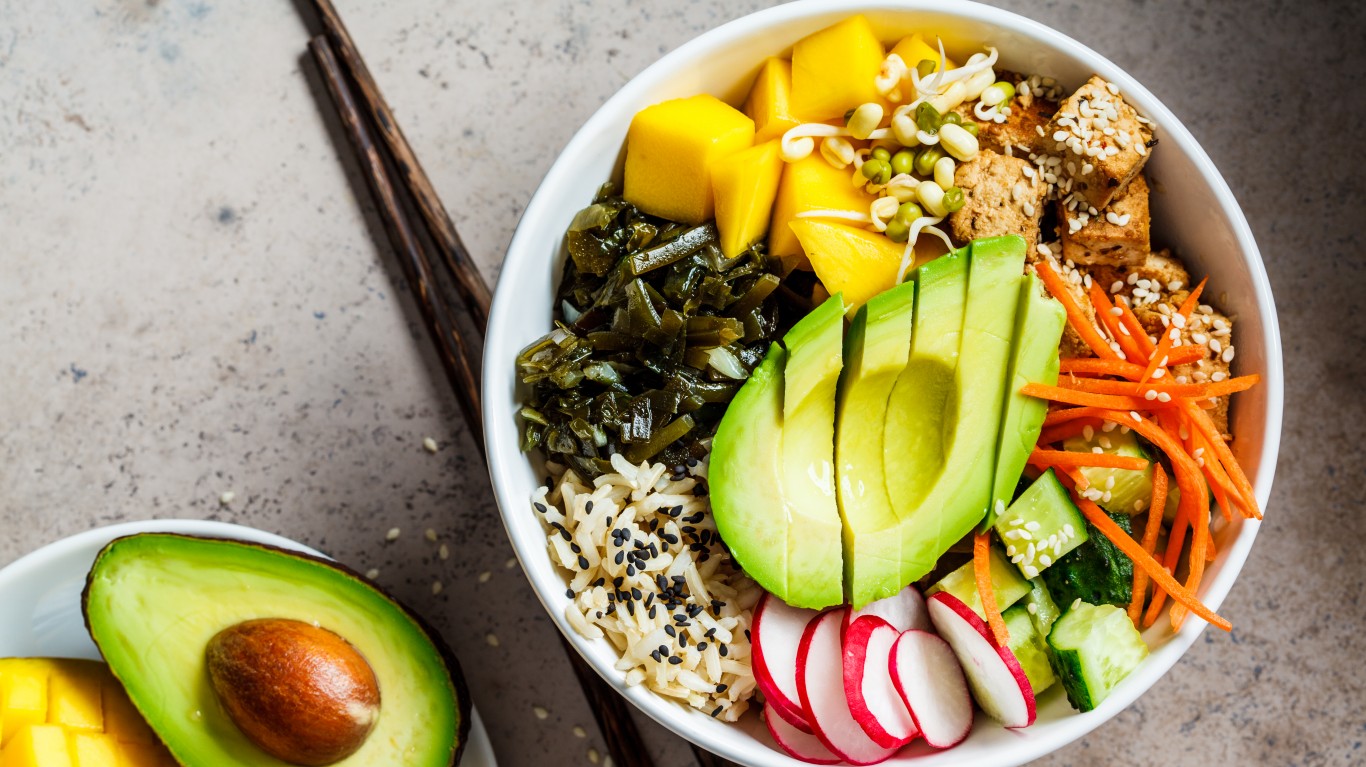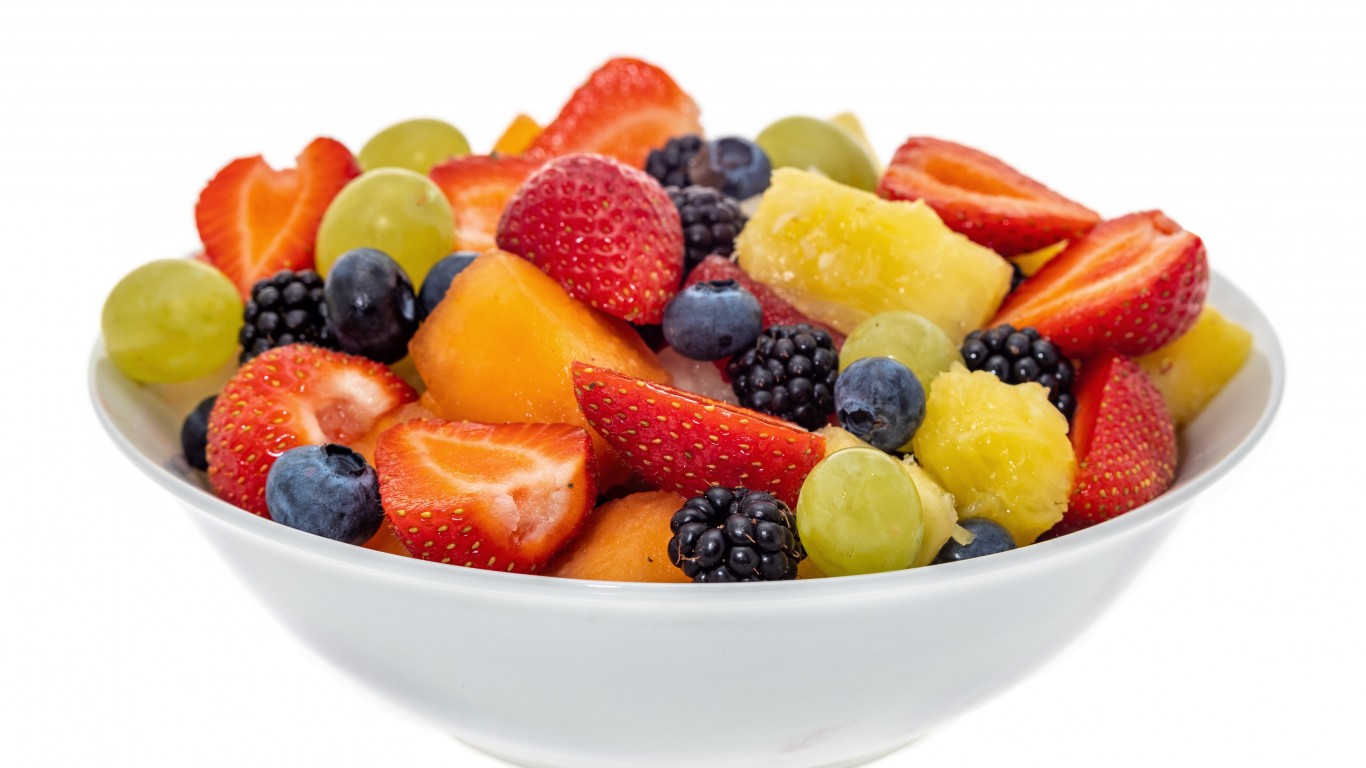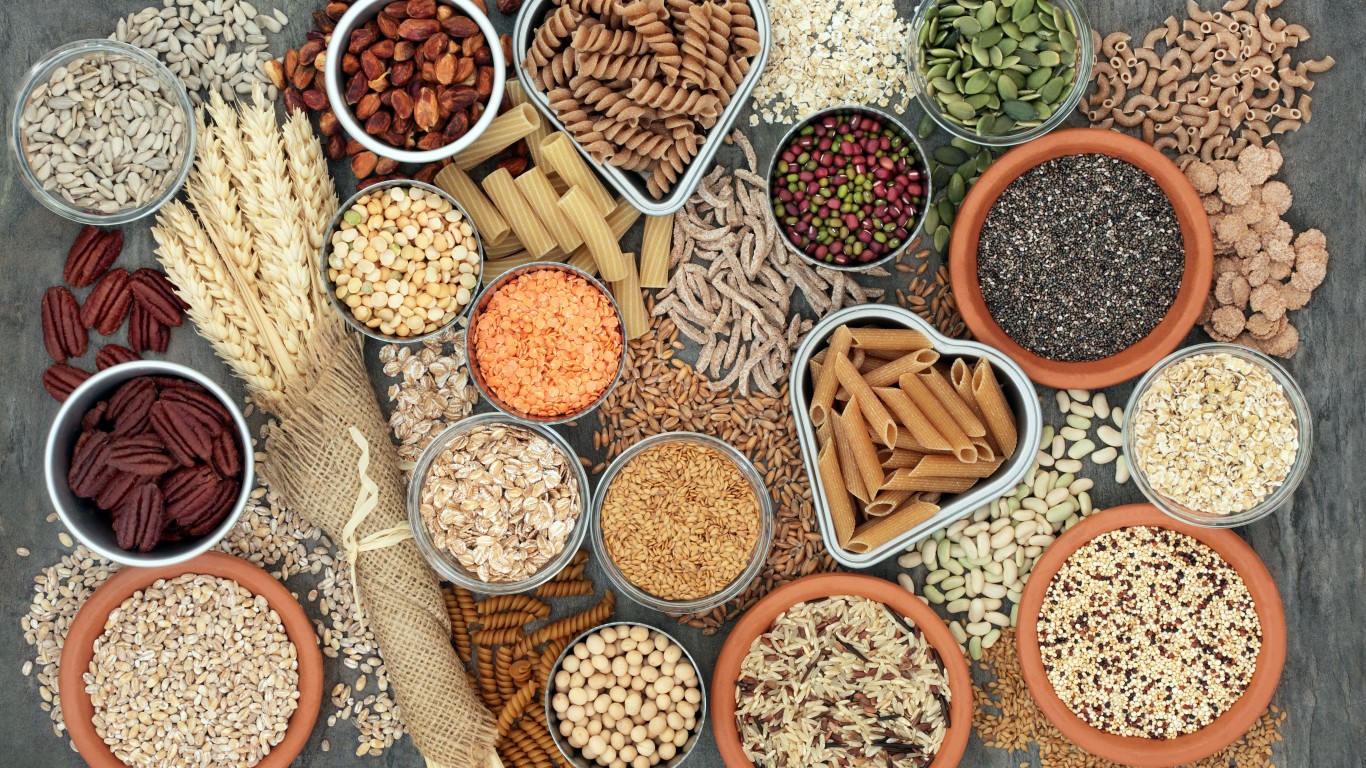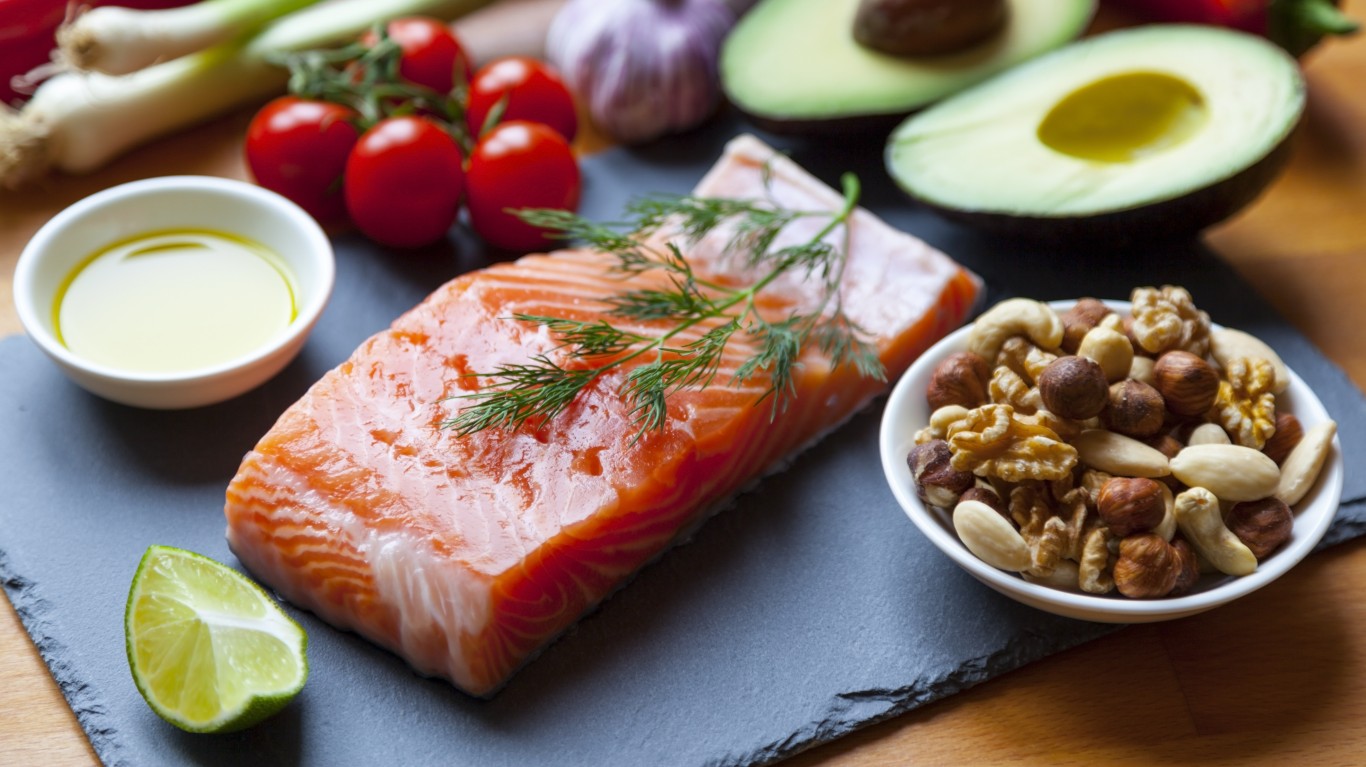
Nowadays, it seems as if everyone is either on a diet or has been on one at some point. The days of useless fad diets are thankfully (mostly) behind us, replaced by ones that aren’t simply focused on dropping a few pounds, but instead on adopting a healthy lifestyle.
Fad diets come and go, and some are downright cringeworthy. Remember the South Beach Diet, the Zone Diet, or the Cabbage Soup Diet? Back in the ‘90s, low-fat diets were all the rage, and even if a snack food or frozen dinner contained next-to-no recognizable ingredients, it was still considered healthy as long as it wasn’t high in fat.
Thankfully, the days of Snack-Wells are behind us, and even the word “diet” itself is in the process of being phased out (Diet Sprite is now called Sprite Zero Sugar, for example). More and more people are beginning to realize that diets on their own are unsustainable, and if the motivation behind starting them is to lose 10 or 15 pounds, they’re bound to fail. (You might be surprised at what nutritionists want you to know about calories.)
Instead, most modern diets revolve around paying close attention to exactly what we’re putting into our bodies, and the recognition that whole foods – fresh fruits and vegetables, whole grains, lean proteins, and moderate amounts of sugar and saturated fat – are the healthiest. It’s about changing your lifestyle, rethinking your relationship with food, and taking a holistic approach to being healthy inside and out. (These disease-fighting foods will help you live a longer life.)
To compile a list of the most popular diets among Americans, 24/7 Tempo reviewed a report by consumer data site Statista, based on a survey conducted by the International Food Information Council and Greenwald & Associates in late March and early April of this year, asking over 1,000 adults living in the U.S. about their eating and dieting habits.
Click here to see the 18 most popular diets in America
Note that in some cases here, “diet” refers to a limited program with a specific goal – usually weight loss – but in other cases to and overall style or philosophy of eating.

18. Vegan diet
> Share of Americans on it: 2%
A strict vegan diet completely excludes any and all animal and animal-derived products, from meat to eggs to dairy and, for some people, even honey.
[in-text-ad]

17. Cleanse diet
> Share of Americans on it: 2%
Cleanse diets, which focus on “detoxification,” are generally short-term, lasting from five days to a couple weeks, on average. Fruits, vegetables, juices, water, herbs, teas, and supplements are common, and occasionally colon cleanses or enemas are involved. Adherents claim that cleanse diets remove “toxins” from the body and decrease inflammation, but the research on their effectiveness is lacking, and doctors say that it’s the job of healthy kidneys, liver, and colon to cleanse the body of toxins..

16. Paleo diet
> Share of Americans on it: 3%
The idea of the paleo diet is to eat the foods eaten by those who lived in the Paleolithic Era, from around 2.5 million to 10,000 years ago. The concept is that our bodies are not adapted to eating foods developed after the advent of modern farming, and that early humans ate a diet that our bodies evolved to align with. Paleo diets prioritize fruits, vegetables, nuts, seeds, eggs, lean meats, and fish, and shun grains, legumes, dairy, starchy vegetables, too much salt and sugar, and processed foods.

15. Vegetarian diet
> Share of Americans on it: 3%
Perhaps the best-known diet of them all, the vegetarian diet excludes meat, poultry, and seafood. Animal products including eggs and dairy are still permitted, and some vegetarians – who may style themselves “pescatarians,” do eat fish and shellfish.
[in-text-ad-2]

14. DASH eating plan diet
> Share of Americans on it: 4%
DASH is short for “Dietary Approaches to Stop Hypertension,” and the associated diet prioritizes a heart-healthy lifestyle. The plan recommends eating lots of fruits, vegetables, whole grains, low-fat dairy, fish, poultry, beans, and nuts, and limits sugar, sodium, and saturated and trans fats.

13. Mediterranean diet
> Share of Americans on it: 5%
Studies have shown that by eating a diet inspired by the eating habits of those who live near the Mediterranean Sea (the original study that inspired this idea was conducted on the Greek island of Crete), the risk of heart disease and early death is lowered. The Mediterranean diet prioritizes unprocessed grains, legumes, olive oil, fruits, and vegetables, and moderate amounts of fish, dairy, and meat.
[in-text-ad]

12. Weight-loss plan diet
> Share of Americans on it: 5%
There’s no specific single weight-loss plan diet that’s been proven to be better than any other, but weight-loss plan diets are customized to the dieter in order to prioritize dropping pounds. They involve making healthy food choices, breaking unhealthy habits, limiting portion sizes, and incorporating exercise into a daily routine.

11. Low-carb diet
> Share of Americans on it: 6%
The low-carb diet minimizes foods that are high in carbohydrates, including bread, grains, beans, sweets, pasta, and starchy vegetables.
10. Ketogenic or high-fat diet
> Share of Americans on it: 7%
The ketogenic diet also sharply reduces carbs, but kicks up the amount of fat. This puts your body into a condition called ketosis, where fat instead of sugar is burned for energy, resulting in weight loss. Critics point out potential health issues with the diet, and it can be extremely dangerous for diabetics.
[in-text-ad-2]

9. Flexitarian diet
> Share of Americans on it: 7%
A combination of the words “flexible” and “vegetarian,” the flexitarian diet â also called the semi-vegetarian diet â is primarily vegetarian, but doesn’t completely abandon meat. A flexitarian will primarily eat fruits, vegetables, whole grains, and plant-based proteins, but will also indulge in a burger or roast chicken occasionally.

8. Carb-cycling diet
> Share of Americans on it: 7%
Bodybuilders and people who work out a lot can have trouble on a low-carb diet, so the carb-cycling diet was developed to alternate how many carbs are consumed based on workouts and long-term goals. Low-carb days put the dieter in a fat-burning state, and high-carb days help boost the metabolism.
[in-text-ad]

7. Intuitive eating diet
> Share of Americans on it: 7%
The idea of “intuitive eating” is that food is neither inherently good nor bad. Instead, you should listen to your body and eat what feels right in the moment. This doesn’t mean that you can just eat whatever you want, whenever you want; intuitive eaters are encouraged to only eat when they’re hungry, stop eating when they’re full, choose foods that make them feel good, and not eat emotionally.

6. Gluten-free diet
> Share of Americans on it: 9%
The gluten-free diet is for those who have celiac disease or a gluten sensitivity. Gluten is a protein found in wheat and rye, so gluten-free people avoid foods that do or may contain gluten, including wheat bread, pasta, cakes, cookies, and beer.

5. Intermittent fasting diet
> Share of Americans on it: 10%
As opposed to diets that focus on what to eat, intermittent fasting focuses on when to eat. The theory is that if you fast for a set number of hours every day (for example only eating within an eight-hour window), your body exhausts its sugar stores and instead burns fat, resulting in weight loss. A variation calls for dramatically restricting calorie intake (typically gto 500 for women, 600 for men) two or three days a week.
[in-text-ad-2]

4. Plant-based diet
> Share of Americans on it: 12%
Many people confuse “vegan” with “plant-based,” but they’re actually not the same. Where a vegan diet completely eliminates all animal products, plant-based dieters still eat meat and animal products, albeit in very small quantities.

3. Calorie counting diet
> Share of Americans on it: 13%
Calorie counting adheres to the theory that in order to lose weight, you need to create a “calorie deficit” by eating fewer calories than you’re burning off via exercise. So for example, if you’re consuming 2,000 calories worth of food and drink per day, then you’ll need to burn off slightly more calories through exercise in order to lose weight.
[in-text-ad]

2. Mindful eating diet
> Share of Americans on it: 14%
“Mindfulness” is an overused buzzword these days, but many people swear by it when it comes to eating. Mindful eating involves eating slowly, only eating until you’re full, only eating when you’re truly hungry, using all of your senses while eating, and paying attention to how food makes you feel. It is similar to intuitive eating.

1. Clean eating diet
> Share of Americans on it: 16%
Eating “clean” means eating foods that are minimally processed and as close to their natural state as possible. This means foregoing processed meats, snack foods, and the like, and instead eating healthy, nutrient-dense foods like fresh fruits and vegetables, lean protein, whole grains, and dairy.
Thank you for reading! Have some feedback for us?
Contact the 24/7 Wall St. editorial team.

 24/7 Wall St.
24/7 Wall St. 24/7 Wall St.
24/7 Wall St.


